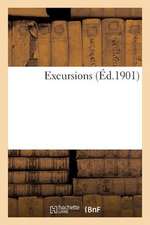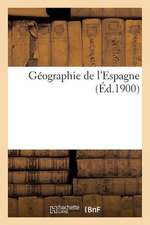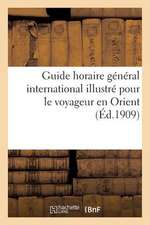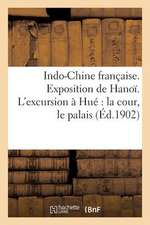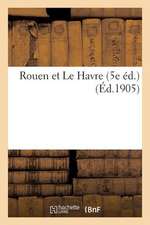Bangladesh Cinema and National Identity: In Search of the Modern?: Routledge Contemporary South Asia Series
Autor Zakir Hossain Rajuen Limba Engleză Hardback – 17 dec 2014
This book investigates the roles of a non-Western "national" film industry in Asia in constructing nationhood and identity within colonial and postcolonial predicaments. Drawing on the idea of cinema as public sphere and the postcolonial notion of formation of the "Bangladesh" nation, interactions between cinema and middle-class Bengali Muslims in different social and political matrices are analyzed. The author explores how the conflict among different social groups turned Bangladesh cinema into a site of contesting identities. In particular, he illustrates the connections between film production and reception in Bangladesh and a variety of nationalist constructions of Bengali Muslim identity. Questioning and debunking the usual notions of "Bangladesh" and "cinema," this book positions the cinema of Bangladesh within a transnational frame. Starting with how to locate the "beginning" of the second Bengali language cinema in colonial Bengal, the author completes the investigation by identifying a global Bangladeshi cinema in the early twenty-first century.
The first major academic study on this large and vibrant national cinema, this book demonstrates that Bangladesh cinema worked as different "public spheres" for different "publics" throughout the twentieth century and beyond. Filling a niche in Global Film and Media Studies and South Asian Studies, it will be of interest to scholars and students of these disciplines.
| Toate formatele și edițiile | Preț | Express |
|---|---|---|
| Paperback (1) | 449.41 lei 43-57 zile | |
| Taylor & Francis – 22 noi 2017 | 449.41 lei 43-57 zile | |
| Hardback (1) | 1055.51 lei 43-57 zile | |
| Taylor & Francis – 17 dec 2014 | 1055.51 lei 43-57 zile |
Din seria Routledge Contemporary South Asia Series
-
 Preț: 393.90 lei
Preț: 393.90 lei -
 Preț: 310.08 lei
Preț: 310.08 lei - 8%
 Preț: 389.83 lei
Preț: 389.83 lei -
 Preț: 296.64 lei
Preț: 296.64 lei -
 Preț: 316.71 lei
Preț: 316.71 lei -
 Preț: 313.81 lei
Preț: 313.81 lei -
 Preț: 349.02 lei
Preț: 349.02 lei - 9%
 Preț: 1035.76 lei
Preț: 1035.76 lei - 18%
 Preț: 1056.00 lei
Preț: 1056.00 lei - 26%
 Preț: 848.40 lei
Preț: 848.40 lei - 18%
 Preț: 1059.48 lei
Preț: 1059.48 lei - 18%
 Preț: 1068.52 lei
Preț: 1068.52 lei - 18%
 Preț: 1060.87 lei
Preț: 1060.87 lei - 18%
 Preț: 1057.26 lei
Preț: 1057.26 lei - 18%
 Preț: 1057.75 lei
Preț: 1057.75 lei - 18%
 Preț: 1061.93 lei
Preț: 1061.93 lei - 18%
 Preț: 1057.05 lei
Preț: 1057.05 lei - 18%
 Preț: 1062.98 lei
Preț: 1062.98 lei - 18%
 Preț: 1049.21 lei
Preț: 1049.21 lei - 18%
 Preț: 1058.79 lei
Preț: 1058.79 lei - 18%
 Preț: 1057.09 lei
Preț: 1057.09 lei - 18%
 Preț: 705.87 lei
Preț: 705.87 lei - 18%
 Preț: 1054.97 lei
Preț: 1054.97 lei - 18%
 Preț: 1109.42 lei
Preț: 1109.42 lei - 25%
 Preț: 823.63 lei
Preț: 823.63 lei - 18%
 Preț: 1169.78 lei
Preț: 1169.78 lei - 26%
 Preț: 846.42 lei
Preț: 846.42 lei - 18%
 Preț: 1054.71 lei
Preț: 1054.71 lei - 18%
 Preț: 1057.75 lei
Preț: 1057.75 lei - 18%
 Preț: 1062.98 lei
Preț: 1062.98 lei - 26%
 Preț: 822.36 lei
Preț: 822.36 lei - 26%
 Preț: 848.15 lei
Preț: 848.15 lei - 18%
 Preț: 1053.92 lei
Preț: 1053.92 lei - 18%
 Preț: 698.58 lei
Preț: 698.58 lei - 18%
 Preț: 1058.79 lei
Preț: 1058.79 lei - 18%
 Preț: 1062.98 lei
Preț: 1062.98 lei - 18%
 Preț: 1057.75 lei
Preț: 1057.75 lei - 18%
 Preț: 1060.87 lei
Preț: 1060.87 lei - 18%
 Preț: 1057.40 lei
Preț: 1057.40 lei - 18%
 Preț: 1056.56 lei
Preț: 1056.56 lei - 18%
 Preț: 1169.45 lei
Preț: 1169.45 lei - 25%
 Preț: 823.63 lei
Preț: 823.63 lei - 18%
 Preț: 1059.48 lei
Preț: 1059.48 lei -
 Preț: 378.09 lei
Preț: 378.09 lei - 18%
 Preț: 1057.75 lei
Preț: 1057.75 lei - 18%
 Preț: 1227.38 lei
Preț: 1227.38 lei - 26%
 Preț: 850.37 lei
Preț: 850.37 lei - 18%
 Preț: 1166.01 lei
Preț: 1166.01 lei
Preț: 1055.51 lei
Preț vechi: 1287.22 lei
-18% Nou
Puncte Express: 1583
Preț estimativ în valută:
201.97€ • 211.41$ • 168.10£
201.97€ • 211.41$ • 168.10£
Carte tipărită la comandă
Livrare economică 31 martie-14 aprilie
Preluare comenzi: 021 569.72.76
Specificații
ISBN-13: 9780415465441
ISBN-10: 0415465443
Pagini: 242
Ilustrații: 4 black & white halftones
Dimensiuni: 156 x 234 x 20 mm
Greutate: 0.48 kg
Ediția:New.
Editura: Taylor & Francis
Colecția Routledge
Seria Routledge Contemporary South Asia Series
Locul publicării:Oxford, United Kingdom
ISBN-10: 0415465443
Pagini: 242
Ilustrații: 4 black & white halftones
Dimensiuni: 156 x 234 x 20 mm
Greutate: 0.48 kg
Ediția:New.
Editura: Taylor & Francis
Colecția Routledge
Seria Routledge Contemporary South Asia Series
Locul publicării:Oxford, United Kingdom
Public țintă
PostgraduateCuprins
Introduction 1.Methods in Film Historiography: Towards an Interpretive History of Bangladesh Cinema 2.National Cinema and Non-Western Modernity: Framework to Study Bangladesh Cinema 3. National Cinema Study and Beginning of/in Bangladesh Film History 4. Bengali Cinema and Cultural Modernity in Colonial Bengal 5. Dhaka Film Industry and Bengali-Muslim Modernity in Postcolonial East Pakistan 6. Popular Cinema in between Nation-state and Market Forces in Contemporary Bangladesh 7. Cultural Modernity and Art Film Discourses: Towards a Global Bangladeshi Cinema?
Notă biografică
Zakir Hossain Raju is Professor in Media and Communication and Dean of Liberal Arts and Social Sciences at Independent University Bangladesh. His research focuses on film and identity, cultural translation and popular visual culture in trans-Asian contexts, especially relating to the cinemas of Bangladesh, India, Malaysia and South Korea.
Descriere
This book analyses the relationship between cinema and modernity in Bangladesh. It investigates the roles of a non-western ‘national’ film industry in Asia in constructing nationhood and identity within colonial and postcolonial predicaments, and analyses the political, economic and cultural forces that have been active in shaping Bangladesh cinema. The author explores how the conflict among different social groups turned Bangladesh cinema into a site of contesting identities during the twentieth century and beyond.









